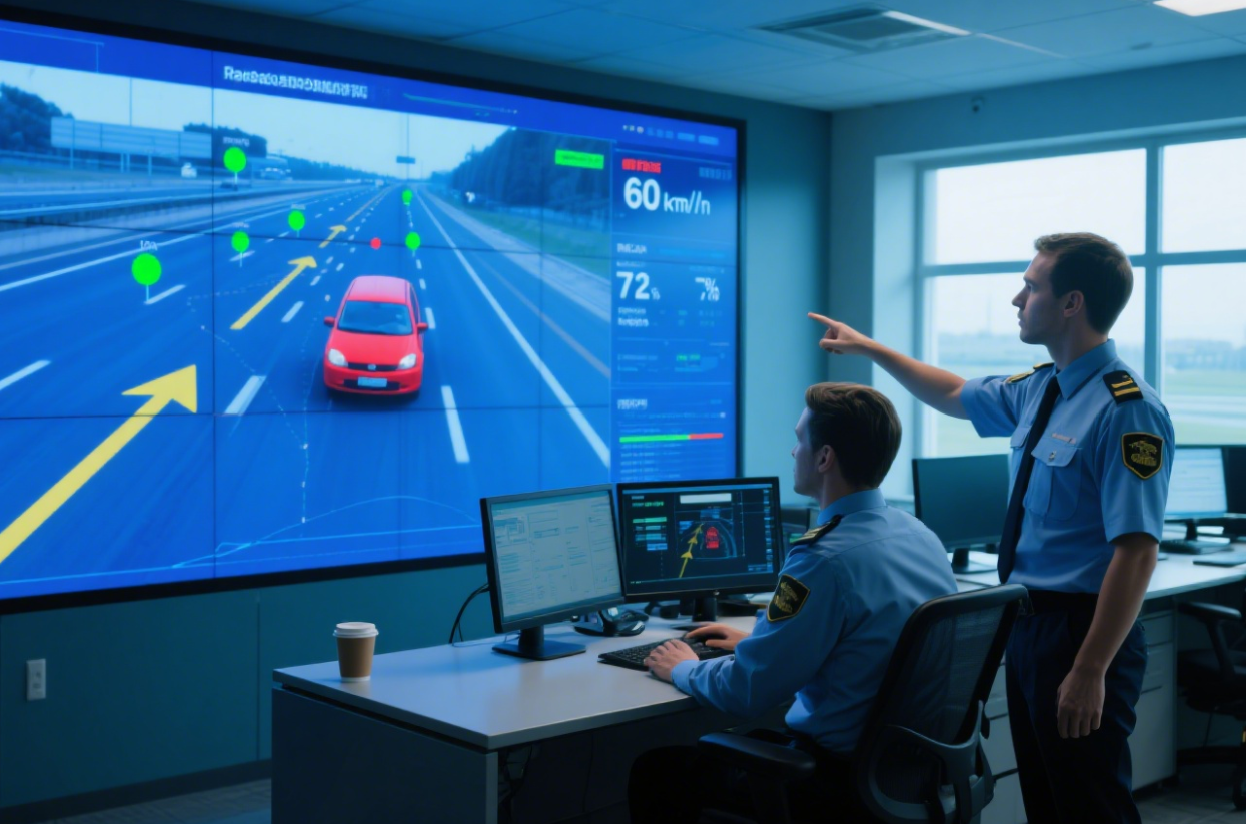Introduction: Challenges of Narrow Lane Speed Measurement
Narrow lanes, such as urban streets, construction zones, toll booths, or bridge approaches, present unique challenges for traffic monitoring. Lane widths often measure less than 3.5 meters, and vehicles travel in close proximity. Standard traffic sensors may:
-
Merge vehicles incorrectly: Vehicles spaced closely can be detected as a single target, resulting in inaccurate speed readings.
-
Miss vehicles entirely: Fast-moving vehicles may evade detection if the sensor coverage or positioning is suboptimal.
-
Suffer from multipath interference: Reflections from guardrails, concrete barriers, or roadside structures can distort readings.
This raises a critical question: Can millimeter-wave radar provide precise vehicle speed measurements in narrow lane conditions without sacrificing accuracy?
Advantages of Millimeter-Wave Radar in Narrow Lanes
Linpowave V200 mmWave radar is specifically designed for these scenarios:
-
High Frequency and Narrow Beamwidth – Operating at 77–81 GHz, it can differentiate vehicles just a few meters apart.
-
Multi-Target Tracking – Capable of tracking several vehicles simultaneously in each lane.
-
Wide Detection Range – 0.4–300 meters allows accurate measurement of both nearby and approaching vehicles.
-
Compact and Lightweight – Dimensions of 70×50×5.5 mm and weight of 15 g make installation on gantries, poles, or toll booths straightforward.
-
Low Power Consumption – 4 W average power supports continuous operation without adding significant energy cost.
-
All-Weather Reliability – Performs well under rain, fog, dust, and low-light conditions, unlike optical sensors.
These capabilities make mmWave radar ideal for construction zones, narrow urban lanes, and toll booth monitoring, where precision is critical.
Quantitative Performance and Field Data
In real-world deployments and controlled field tests, the radar demonstrates the following metrics:
| Metric | Value |
|---|---|
| Detection Range | 0.4–300 m |
| Speed Accuracy | ±0.5 km/h |
| Lane Width Coverage | <3.5 m per lane |
| Multi-Target Tracking | 4–6 vehicles simultaneously |
| Reaction Time | ≤50 ms |
| False Detection Rate | <3% |
| Missed Detection Rate | <1% |
Case Study: At a toll plaza with 3.2-meter lane widths, Linpowave radar successfully tracked every vehicle in real-time. Despite peak traffic conditions, speed readings remained within ±0.5 km/h accuracy. Cameras alone missed vehicles during low-light or fog, and conventional radar misclassified up to 18% of closely spaced vehicles.
This confirms that mmWave radar can deliver precise speed data even in narrow lanes, supporting traffic enforcement, analysis, and safety monitoring.
Deployment and Optimization Strategies
To maximize performance in narrow lane applications, implement the following strategies:
-
Optimal Mounting Height and Angle
-
Install radars 4–6 meters above the lane with a slight downward tilt to cover the entire lane and minimize occlusion.
-
-
Advanced Signal Processing
-
Apply FFT analysis and Doppler filtering to separate closely spaced vehicles and reduce multipath interference from nearby structures.
-
-
Multi-Target and Lane Assignment Algorithms
-
Use software algorithms to assign each detected vehicle to its respective lane, minimizing misclassification.
-
-
Routine Calibration and Monitoring
-
Continuous calibration ensures speed measurement remains accurate within ±0.5 km/h, even in changing environmental conditions.
-
-
Optional Sensor Fusion
-
Integrate radar with cameras or LiDAR for license plate recognition, vehicle classification, or additional validation.
-
These methods ensure highly reliable, accurate speed detection in narrow lane conditions.
Practical Applications and Benefits
-
Urban Construction Zones
-
Precise monitoring of vehicle speed in temporary, narrow lanes reduces accidents and enhances worker safety.
-
-
Toll Booths and Narrow Bridges
-
Real-time multi-lane speed detection improves traffic flow management and ensures compliance with regulations.
-
-
Incident Detection
-
Sudden deceleration or irregular speed patterns trigger alerts for accidents or stalled vehicles.
-
-
Cost Efficiency
-
One mmWave radar unit can replace multiple traditional sensors, reducing infrastructure and maintenance expenses.
-
Example: On a narrow bridge approach, deploying Linpowave radar reduced vehicle misclassification by over 90%, ensuring reliable enforcement and minimal traffic disruption.
Conclusion
Millimeter-wave radar is a reliable solution for narrow lane vehicle speed detection, providing:
-
High accuracy (±0.5 km/h)
-
Multi-target tracking in confined lanes
-
All-weather, low-latency operation
-
Compact, lightweight, and energy-efficient design
Through optimized mounting, signal processing, lane-specific algorithms, and optional sensor fusion, traffic authorities can obtain accurate real-time speed data even in the most constrained lanes, improving safety, efficiency, and operational effectiveness.



